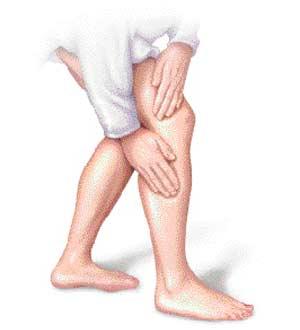By now, we've all seen the ubiquitous TV commercials featuring some poor soul writhing in bed, unable to get a decent night's sleep due to the irritating symptoms of restless leg syndrome. Many of us do have occasional bouts with leg cramps, charley horses, or aching legs, and we wonder: could this be restless leg syndrome? Where did this come from?How did I get it?And what the heck can I do about it? Let's start with the basics
Restless leg syndrome (RLS) is nothing new. In fact, as far back as 1683, Thomas Willis, who was writing a medical book at the time, described RLS in a chapter he titled, "Instructions for Curing the Watching Evil". Willis suggested the disease was caused by "convulsive distempers". Luckily for you, things have been updated, and here is the modern criteria for RLS diagnosis:
You have a strong urge to move your legs which you may not be able to resist. This is often accompanied by very uncomfortable sensations.
The symptoms become much worse when resting. The longer you rest or relax, the worse it gets.
The symptoms get better when you move your legs; sometimes immediate relief is felt. As long as you are moving, you feel better.
Symptoms are worse in the evening, especially when lying down. Activities that bother you at night are not a problem during the day.
RLS affects an estimated 7-10% of the European and North American population. Only a minority experience daily or severe symptoms. It's twice as common in women, and white people are much more prone to RLS than black people. Only 3% of individuals from the Mediterranean or Middle East have it, and an estimated 1-5% of those in the Far East. Thus, researchers believe that genetic inheritance or environmental factors like diet may play a role. It is more common in people who have an iron deficiency, end-stage renal disease, and pregnancy. About 25% of pregnant women experience RLS during their third trimester.
Some people have mild symptoms and consider RLS merely an occasional annoyance; others have a major problem with it. RLS is a neurological disease; it's generally considered a lifelong condition with no cure. Symptoms may worsen with age, although many people have remission periods where symptoms disappear for days, weeks, even months, only to eventually reappear. A diagnosis of RLS does not indicate or foreshadow another neurological disease.
RLS causes a sensation most often described as uncomfortable, electrical, creeping, itching, pins and needles, creepy-crawly, or antsy. It is sometimes described as a numbness or like a body part has "fallen asleep".
Movement of some kind usually brings relief, though it may be temporary and only partial. Different activities may work to alleviate symptoms, among them walking, stretching, yoga and biking. Often a continuous, rapid, up and down leg movement, or a rapid, scissors-type sideways leg movement can help.
Sitting down to watch TV or read, or lying down can often trigger the uncomfortable sensations that accompany RLS, with most people reporting the onset in the evening or at bedtime. RLS is much less prevalent in the morning for most people, although some suffer throughout the day as well. Needless to say, this can bring great difficulty in sleeping, with resultant problems such as being late to work or school, missing appointments or events due to drowsiness or impaired driving. Many people report their worst symptoms when forced to sit for long periods of time, such as on an airplane or taking a long car trip, attending a lengthy meeting or watching a performance.
An increased level of mental awareness may help. Working a crossword, doing Soduku, or playing a game of cards or Scrabble before bedtime may help.
About 60% of cases seem to be genetic. No one knows the exact cause. The most commonly associated medical condition with RLS is iron deficiency, accounting for about 20% of all cases. Other associated conditions are varicose veins, folate and/or magnesium deficiency, fibromyalgia, sleep apnea, uremia, diabetes, thyroid disease, peripheral neuropathy, and Parkinson's disease. Auto-immune disorders such as rheumatoid arthritis, celiac disease, and Sjogren's syndrome may also play a part.
Certain medications may also worsen RLS:
Antiemetic (used to treat naseau)
antihistamines (including over-the-counter cold medicine)
many antidepressants
antipsychotics
anticonvulsants
RLS can be an unpleasant side effect from discontinuing tranquillizers, sleeping pills, or withdrawal from opioids. Hypoglycemia (low blood sugar) seems to worsen RLS symptoms.
A note of caution: while some RLS sufferers have low iron levels, many do not. Never take an iron supplement without first speaking to your doctor and having your iron level tested. Taking iron when it's not needed can cause iron overload disorder, a potentially fatal condition. While uncomfortable, RLS is in itself not a fatal disease. Educate yourself, keep a sense of balance about it, and speak with your medical professional. Above all, don't stress! That definitely only makes it worse, and that's absolutely the last thing you need, isn't it?





